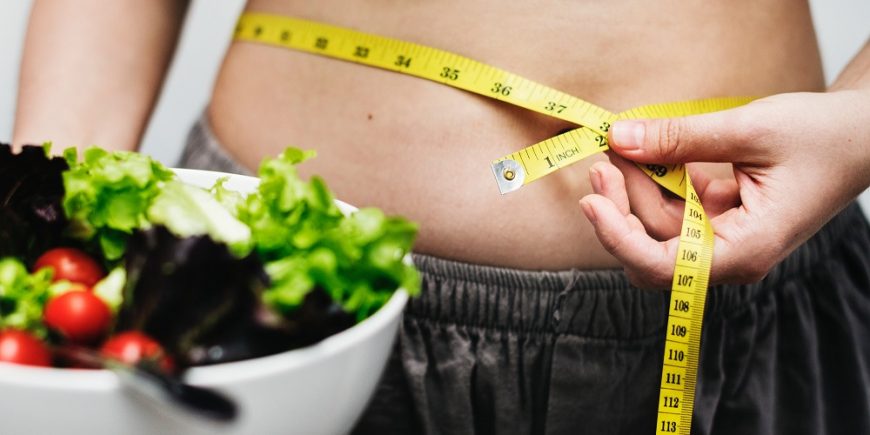Protein
Protein’s biggest job is to build up, keep up, and replace the tissues in your body. Your muscles, your organs, even some of your hormones are made up mostly of protein. Protein helps your body in other ways, too. It likes to make sure things get around by making red blood cells that carries oxygen to every part of your body. It even makes antibodies, the cells that fight off infection and disease. The word protein is derived from Greek, literally meaning of first importance (pro – first, tein – important). Without enough our body starts to break down. One of the signs of anorexia is poor hair and nails, parts of the body that are also derived from protein.
Protein cannot be stored in the body, and so needs to be regularly eaten to maintain our levels. However, not all protein is the same. Protein foods are comprised of combinations from a pool of 22 amino acids. Eight of these are called essential amino acids, because unlike the other 14, they cannot be synthesized within the body.
Essential Amino Acids
Isoleucine
Leucine
Phenylalanine
Threonine
Histidine (in infancy)
Lysine
Methionine
Tryptophane
Valine
Protein quality is determined by the amount of essential amino acids the food contains and also the ratio of these amino acids. Protein values can be expressed as a PER (Protein Efficiency Ratio), NPU (Net Protein Utilisation) score or PDAAS (Protein Digestibility Amino Acid Score
Net Protein Utilisation
The NPU value of a protein describes how efficiently body tissue can be created from food protein. The higher the score of a food the more closely its amino acid pattern (both in quantity and ratio) reflects the amino acid pattern in body tissue.
Food Protein Source
Human Milk
Whole Egg (Hens)
Milk (Cows)
Beef
Fish
Soy Beans
Rice
Peanuts
Peas
Wheat
Corn
Source: FAO/WHO Technical Report. Series
NPU Value
94
87
81
74
72
67
63
55
55
49
36
522
Protein Needs
RDA for weight trainers of 2.0 – 3.0g/kg/bwt per day are generally well above the RDA for the general population of 1.0g/kg/bwt per day (WHO Technical Report Series 452). The main reasons for increased protein seem to be that
- weight trainers want to increase their size and mass in comparison to the average adult who wants to maintain their bodyweight, and
- rigorous workouts increase protein turnover and therefore dietary protein needs
What should I look for in a protein shake?
The top four attributes in no particular order are: 1. Taste – if you are going to consume shakes regularly, why not choose one that is enjoyable to the palette? 2. Protein quality – the main reason for having a shake is to replace ‘real food’, natural sources of protein, which should take preference if possible. Protein quality is determined by the amount of essential amino acids the food contains and also the ratio of these amino acids. Protein values can be expressed as a PER (Protein Efficiency Ratio), NPU (Net Protein Utilisation) score or PDAAS (Protein Digestibility Amino Acid Score). 3. Cost per gram of protein – many products contain the same base protein source, with added extras making a point of difference between competitors. Marketing costs also drive up shelf prices. Read the labels, get out your calculator and do your homework. 4. Mixability – nowadays It is common practice to take your powder and shake container to the gym or elsewhere and to mix on the spot. In these instances you are going to need a powder that mixes smoothly. Of course this is not an issue with pre-mixed shakes or the use of a blender.
Can you only assimilate 30g of protein from each meal?
This may hold true if you are an average person (male of 71kg) of average food intake and average activity status. The larger the person, the more you can assimilate. If you eat a diet with a higher percentage of protein than ‘average’ then your body becomes more adept at dealing with that intake by increasing the amount of digestive enzymes produced. If you create a stronger need for more protein by breaking down muscle tissue, your body will also be able to process more protein.
Fat
Fat is the body’s major form of energy storage. Many fats that people eat are really a combination of two different types of substances: saturated fatty acids and unsaturated fatty acids. Saturated fatty acids mainly come from animal foods like meat, milk, cheese, and some oils that come from plants, especially palm products. Unsaturated fatty acids are different – they come from plants and fish and are also found in varying levels in most meat products.
Fat sometimes sounds like it’s always a bad thing that people should not eat, but actually our bodies need some fat to work correctly. Fat insulates our bodies from the cold and provides some cushioning for our organs. Fat gives our bodies energy. Some fats help to make up important hormones that we need to keep our bodies at the right temperature or keep our blood pressure at the right level. Fat helps you have healthy skin and hair. And fat is like your body’s very own storage and moving service: it helps vitamins A, D, E, and K get transported through your bloodstream when your body needs them.
Essential Fatty Acids
Just as the body requires some essential amino acids to function correctly it also requires two particular types of unsaturated fats called essential fatty acids (EFA’S). They are linoleic acid (omega-6 fatty acid) and linolenic acid (omega-3 fatty acid). The body uses linolenic acid to mke two other essential fatty acids, docosahexaenoic acid and eicosapentaenoic acid. These last two fatty acids are commonly found in fish oil. The best vegetable source of linolenic acid is either flaxseed oil or linseed oil. Good sources of linoleic acid are canola oil, safflower oil, sunflower and soybean oil. Generally we get enough of this type of oil through eating processed foods. Primrose and borage oils contain good amounts of both types.
EFA’s are necessary for the formation of vital compounds in the body called prostaglandins which play a role in blood pressure regulation, heart function, allergic response, inflammation, nerve transmission and even steroid hormone production. They have been shown to produce favourable blood lipid profiles (> HDL’s, < total cholesterol). Try mixing 200ml of flaxseed oil with 200ml of safflower oil and have 10ml 2-3 times a day with meals. Three capsules (1g) of evening primrose oil and fish oil taken 3 x daily will provide a similar dose.
Saturated fat when consumed in excess has been linked to unfavourable blood lipid profiles which can lead to heart and blood vessel problems. Restricting these to moderate amounts therefore, should be a goal for optimum health
Saturated Fats
Food
Coconut: fresh
Desiccated
Butter
Potato Chips (palm oil)
Red Meat (lean)
(other)
Cheese
Polyunsaturated Margarine
Ice Cream
Eggs
Avocado
Chicken
Cereals
Fish
Bread
Vegetables
Cottage cheese
Skim Milk
Fruit
Saturated Fat g/100g
30
54
45
47
3
8-20
16-23
11
6
4
3
3
0-2
0-2
1
0-1
trace
trace
trace
Fats are the most calories dense macronutrient, and are usually restricted in most diet regimes for this reason. One gram of protein or carbohydrate contains approximately 4 calories, while one gram of fat contains about 9 calories. Unfortunately, due to our evolutionary history, we are designed to crave the most calories dense foods for our survival – fats and sugars. It is against our natural desires to resist such foods.
Carbohydrate
Carbohydrates are our bodies preferred energy source. It takes less effort from our body to produce energy from carbs than protein or fats.Carbohydrates come in two forms, simple and complex. The difference is the number of bonds between molecules of the carbohydrate source. Logic would assume that simple carbs with fewer bonds would be broken down more quickly than complex carbs with more bonds and in some cases this is true. However, when enzymes (natures catalysts) and hormones are involved, the rules change.
The Glycemic Index (GI) gives us a much better idea of how quickly carb foods are absorbed. A foods GI score indicates how quickly that particular food is absorbed by the body and turned into glucose which then can be quickly converted to fuel. Most GI charts use glucose as the reference carbohydrate and that is assigned a score of 100, being utilised very quickly. Other GI charts use white bread as the reference carb. This can create problems as there are many variations and recipes of white bread around the world.
The aim for general food consumption is to choose foods with a lower GI score. The exception being post workout, when high GI foods are important for the immediate recovery process. A low GI food will be absorbed more slowly and therefore release its energy over a longer time, keeping you satisfied longer.
I must point out that a number of factors affect the GI scores of foods. Fat, protein and fibre all have an impact of lowering the GI. Meals that contain more than one food will have a GI that is a combination of those foods.
Below find some GI scores of selected foods.
The Glycemic Index
Grains & Cereals
All Bran
Brown Rice
White Rice
Corn Flakes
Porridge
Shredded Wheat
Swiss Museli
Wholemeal Spaghetti
White Spaghetti
Sweet Corn
51
66
72
80
49
67
66
42
50
59
Sugars
Fructose
Glucose
Maltose
Honey
Sucrose
Bakery
White Bread
Wholemeal Bread
Rye Bread
Pastry
Sponge cake
Miscellaneous
Fish Fingers
Mars Bar
Peanuts
Sausage
Dairy Products
Ice Cream
Skim Milk
Whole Milk
Yoghurt
Vegetables & Legumes
Baked Beans
Kidney Beans
Lentils
Peas
Soybeans
Carrots
Sweet Potato
White Potato
Potato, Instant
Potato Chips
Fruits
Apples
Bananas
Cherries
Grapefruit
Grapes
Orange Juice
Oranges
Peaches
Pears
Plums
Raisins
39
62
23
26
45
46
40
29
34
25
64










